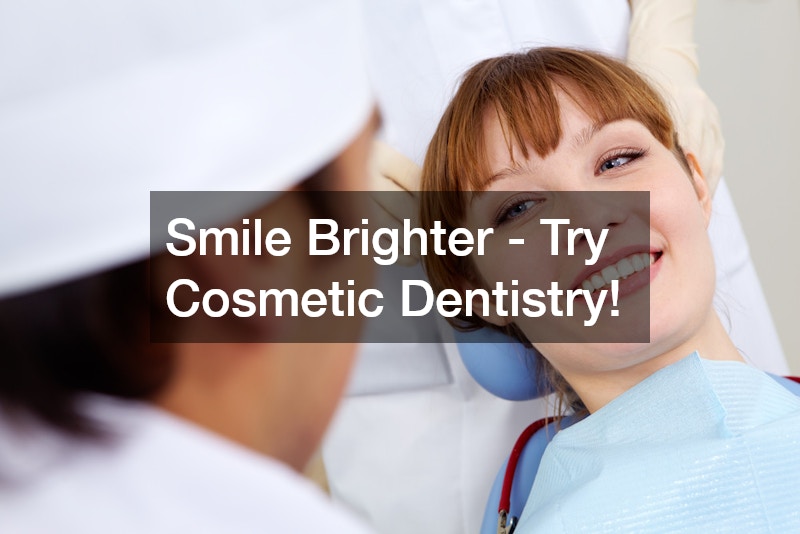Transform Your Smile with a Cosmetic Dentist and Professional Teeth Whitening
Discover the transformative power of cosmetic dentistry and professional teeth whitening, and learn how these services can enhance your smile and boost your confidence.
What is Cosmetic Dentistry?
Overview of Cosmetic Dentistry
Cosmetic dentistry is a specialized field of dental care focused on improving the appearance of a person’s teeth, gums, and overall smile. This branch of dentistry blends art and science to deliver results that enhance not only the aesthetics but also the function of your teeth.
The procedures involved are designed to correct a wide array of dental issues, from whitening and shaping to closing spaces and restoring damaged teeth. One of the key benefits of cosmetic dentistry is that it provides long-term solutions that contribute to both your dental health and self-confidence. By investing in cosmetic dental procedures, you’re investing not only in a beautiful smile but also in your overall well-being.
Difference Between Cosmetic and General Dentistry
While general dentistry focuses on preventing and treating oral diseases, cosmetic dentistry is primarily concerned with aesthetic improvements. General dentists address issues such as tooth decay, gum disease, and root canals to maintain oral health, whereas cosmetic dentists use advanced techniques to enhance appearance. This does not mean, however, that the two fields are mutually exclusive; they often overlap, as healthy teeth are a prerequisite for cosmetic dental procedures. A comprehensive dental practice should incorporate both general and cosmetic elements to ensure holistic care for patients. Understanding these distinctions helps patients select the appropriate dental professional for their specific needs.
Common Cosmetic Dentistry Procedures
Common cosmetic dentistry procedures include teeth whitening, veneers, crowns, bonding, and orthodontic treatments such as braces or Invisalign. Teeth whitening is perhaps the most popular procedure, offering a simple and effective way to brighten a smile. Veneers and crowns provide solutions for structural issues like chips, cracks, or significant discoloration, offering durable and aesthetically pleasing results. Bonding can be used to repair minor imperfections by applying a tooth-colored resin that blends seamlessly with natural teeth. Orthodontic treatments are indispensable for correcting alignment issues, thereby improving both appearance and oral health.
Benefits of Cosmetic Dentistry
The benefits of cosmetic dentistry extend beyond just enhancing the appearance of your smile. One significant advantage is an increase in self-esteem; people who are proud of their teeth often smile more, which can positively influence social and professional interactions. Cosmetic dentistry can also contribute to better oral health; for example, straight teeth are easier to clean, which reduces the risk of cavities and gum disease. Additionally, correcting bite issues can prevent jaw pain and improve chewing efficiency. These benefits make cosmetic dentistry a worthwhile investment for those looking to improve their quality of life.
How to Choose a Cosmetic Dentist
Selecting the right cosmetic dentist is crucial for achieving your desired results. Start by researching potential dentists’ qualifications, training, and experience in cosmetic procedures. Reading patient reviews and testimonials can provide insight into the quality of care provided. It’s also essential to schedule a consultation to discuss your goals and get a feel for the dentist’s communication style and philosophy of care. Finally, make sure the dental practice is well-equipped with the latest technology and methods to ensure you receive state-of-the-art treatment.
How Does Professional Teeth Whitening Work?
Understanding the Teeth Whitening Process
Professional teeth whitening is a process that involves using safe, effective bleaching agents to lighten the color of teeth. These agents, commonly in the form of hydrogen peroxide or carbamide peroxide, break down stains on the tooth surface, making them less visible. The process can be completed in-office, where stronger agents allow for immediate results, or through a custom take-home kit provided by a dentist. Regardless of the method, professional whitening is monitored by dental professionals to ensure safety and effectiveness. Continual advancements in whitening technology have made it possible to achieve brighter smiles with minimal discomfort.
In-Office Teeth Whitening vs. At-Home Kits
In-office teeth whitening offers the advantage of immediate results, typically taking only one session to achieve significant lightening. This method uses a higher concentration of bleaching agents, which should only be applied by a dental professional to minimize risks. In contrast, at-home kits provide a convenient alternative, allowing for gradual whitening over a few weeks. These kits, often customized with trays fitted to the patient’s teeth, allow for a more comfortable fit and better distribution of the whitening agent. While both options are effective, in-office treatments are ideal for those looking for quick results or those with severe staining.
Risks and Considerations of Teeth Whitening
Though professional teeth whitening is generally safe, there are some risks and considerations to keep in mind. Some individuals may experience tooth sensitivity or gum irritation following the procedure; however, these symptoms are usually temporary. It’s important for patients with sensitive teeth to discuss this with their dentist prior to undergoing whitening to explore milder treatment options. Another consideration is that whitening treatments are not effective on all types of discoloration, such as those caused by certain medications or injury. Therefore, consulting with a dentist is vital to determine the most suitable approach for each individual.




